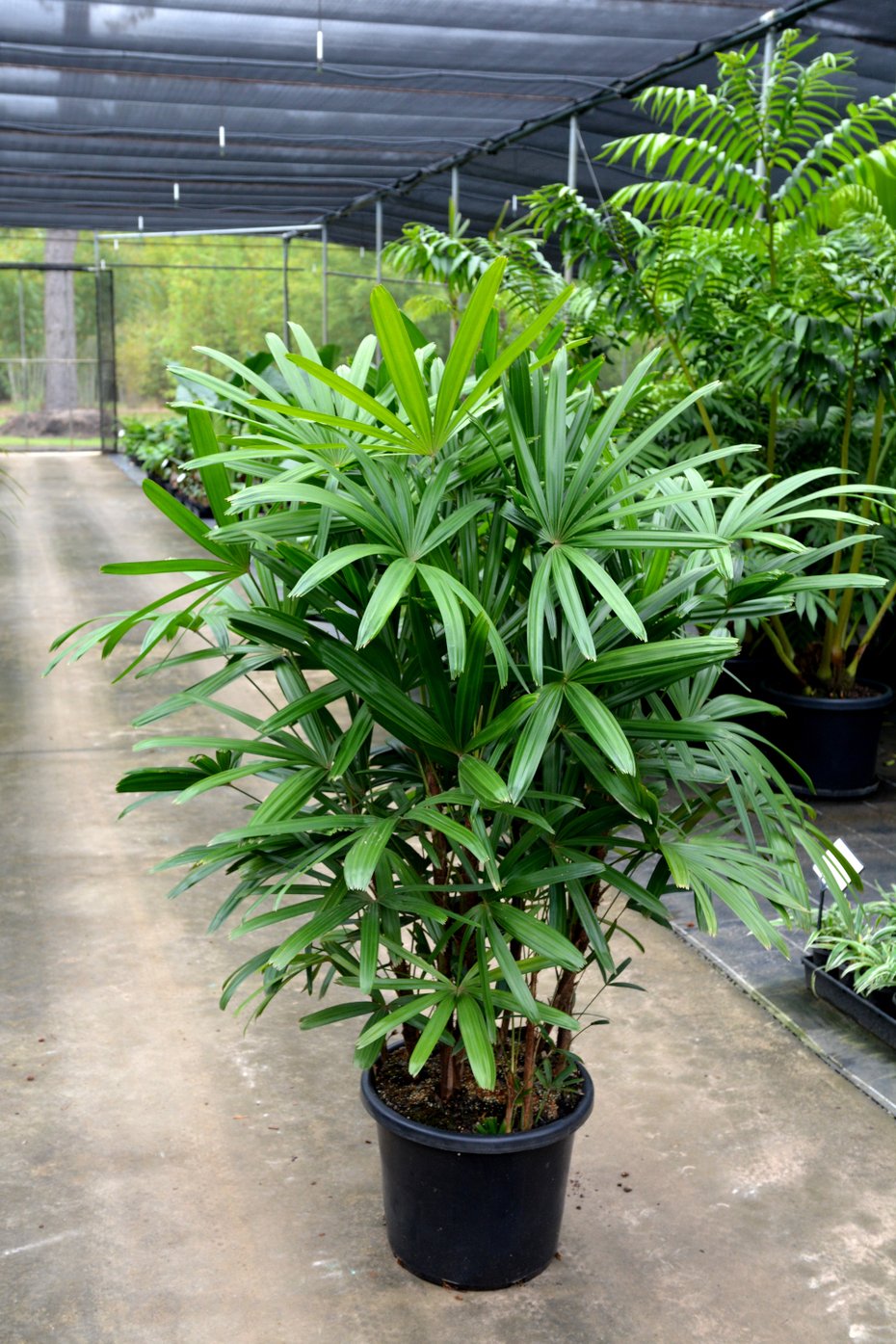No products in the cart.
| Scientific name | Rhapis excelsa |
| Common name | Rhapis excelsa, Lady Palm |
| Temperature requirement | 25-35 °C |
| Humidity | 40-50% |
| Light | Any kind of light from shade to full sunlight. |
| Watering | water everyday &keep moist |
| Pests | mites, mealybugs, and scales |
| Pet friendliness | Not hazardous |
| Maximum Plant height | Up to 5m |
| Potting mix | Potting soil/Red soil/manure/perlite |
| Pot requirement | Good drainage&repot every 1-2 years |
| Nutrition | Apply Manure for first 15 days and NPK for next 15 days |
| Pruning/training | Remove dead & diseased leaves with sterile shears |
| Description | Rhapis Excelsa, otherwise known as the lady palm, bamboo palm, or the Rhapis palm, is a small to medium palm tree that grows in clumps with slender stems. This palm prefers to be grown in a loamy soil mixture with excellent drainage. The Rhapis palm does require monthly fertilization during the growing season of spring and summer. Select a balanced liquid fertilizer and dilute to about half strength.Being a tropical plant, this palm thrives in average indoor temperatures between 60 to 80 degrees Fahrenheit. They should never be exposed to temperatures below 55 degrees, as this may cause irreparable damage. Your palm should not be exposed to cold drafts or hot air from heating vents as this may cause issues. These palms do not like to be susceptible to sudden changes in temperature. This plant prefers to be grown in an environment with at least 50% humidity. If this plant does not receive adequate humidity, the tips of its fronds will begin to brown. You may boost your home’s humidity by installing a humidifier or pebble tray. This palm is somewhat drought tolerant once established, but during active growth should be watered whenever the top 1 inch of soil has become dry. Watering frequency should be reduced in winter to whenever the top few inches of soil has dried. It is important not to overwater this plant. Ensure that you select a container that has ample drainage holes and that your plant is not allowed to sit in excess water from within its drainage tray. These palms do not like being placed in direct sunlight. Unfiltered sun may cause leaf scorching quickly. These palms like a dappled light and may even tolerate partial shade. When grown indoors, these palms should receive bright, indirect light.The Rhapis palm does not require much pruning. However, fronds that are highly discolored or dead may be pruned off periodically. It is important to note that browning is reasonably typical and that the plant still obtains nutrients from slightly browned fronds, and these should not be removed. |
Additional information
| Choose Height | 30cm-50cm, 60cm-80cm, 80cm-100cm, 150cm-180cm |
|---|

























Reviews
There are no reviews yet.